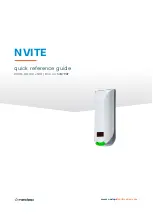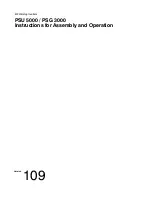
ATEX
19
PORTA
BASE
This product can be manufactured for use in
explosive atmospheres in line with the following
requirements and information as an upgrade. Any
use which differs or exceeds this is considered
incorrect and REID Lifting will not accept any
responsibility or liability for damages resulting from
false application. The risk is solely with the user. If
the product has been customized in any way, then
it may not comply with standards and no longer be
suitable for use in explosive atmospheres. If this is
the case, then the product will not have any of the
markings below. If in doubt, please contact your
REID representative.
Classification [Zone 2]
Subject to being upgraded, this product will meet
the requirements of ATEX classification Zone 2
explosive atmospheres, providing a normal level
of protection where mixtures of air and gases,
vapours or mists or by air and dusts mixtures are
unlikely to occur or, if they do occur, are likely
to do so only infrequently and for a short period
only.
If the product is suitable for use in this
environment it will have the following
identification on the serial label:
Spark Formation
There is an Increased danger of ignition when
certain material pairings clash, namely non-
corrosion-resistant steel or cast iron against
aluminum, magnesium or pertinent alloys. This
applies especially in the case of rust or surface
rust. When assembling the product and inserting
fastening components, these must therefore be
clear of rust and debris of any kind. As stated
previously, care must be taken to ensure the
product is handled in a suitable manner, never
thrown down and always placed carefully onto
the ground.
Static Electricity
For Zone 2 applications, there is a potential risk of
static electricity build-up leading to an incentive
spark. To mitigate the risk powder coated sections
will be removed to ensure the product has a clear
route to earth. Although the risk of such ignition is
unlikely, it is the user’s responsibility to ensure that
the route to earth is maintained.
Inspection, Maintenance & Repair
Special attention should be given to dust deposits
on the structure, especially in areas where the
profiles come into contact, and should be wiped
clean and care taken not to apply materials that
could create electrostatic charging.
The structure is predominantly constructed from
aluminum which will not rust. However, there are
steel components used throughout.
Where there is sign of any rust deposits on the
aluminium structure, it should be wiped clean as
above and, where there is sign of rust on a steel
component, that component should be removed
from use and the structure not used until a
replacement is fitted.
If using this product in explosive atmospheres,
in addition to the Regular Inspection and
Maintenance information above, these additional
instructions should be followed:
Inspections must be instigated by the user prior
to each use if used in a potentially explosive
atmosphere.
Inspections and maintenance must be carried
out at a safe distance away from an explosive
atmosphere.
As Standard for Zone 2 Environments:
II 3 GD
Ex h IIC T6 Gc
Ex h IIIC T85°C Dc
Tamb -20°C to +55°C
II – Equipment Group
2/3 – Atex Category
GD – Gas & dust
h- non- electrical protection concept
IIC / IIIC – IEC equipment group
T6 / T85°C – temperature classification
Gc /Gb – equipment protection level (gas)
Dc/Db – equipment protection level (dust)
Tamb – ambient temperature range







































